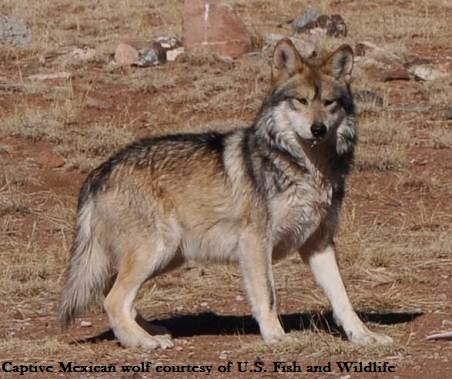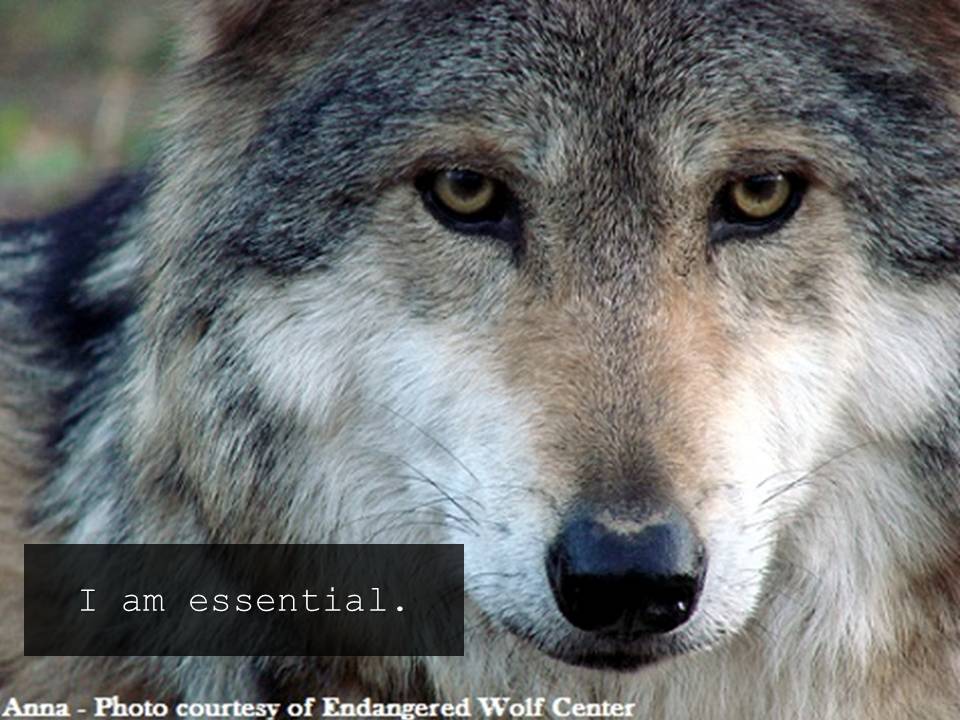18
May
Editorial: Game and Fish Should Wait For Full Wolf EIS

There is no easy answer to the question: Why bring back endangered Mexican gray wolves?
The habitat in eastern Arizona and western New Mexico has been changed through logging and ranching.
The land beyond the initial release zone is full of dangerous, high-speed highways.
And there is strong criticism in the region of federal land management, undermining any federal effort to make the reintroduction program collaborative.
Any one of those factors would make the wolf project difficult; taken together, they would seem to doom it.
But federal wildlife managers have pressed on, and recently they have taken the initiative on two fronts.
One has them adding so-called “nuisance” payments to the money that already goes out to ranchers for the loss of cattle to wolves.
That seems only fair, since it is difficult to prove a livestock kill by wolves — just 19 proven claims were made in 2012.
So now, there is an 11-member Coexistence Council made up of ranchers, local governments and environmental groups. A rancher with wolves on his grazing allotment stands to gain not only if his herd is stressed by the pack but also if pups survive to the end of the year. The rancher, in other words, becomes a financial and program partner in the reintroduction project.
The other initiative is a plan to expand the recovery zone south to I-10 and north to I-40. There is some scientific support for going even farther north to the North Rim and the Kaibab Plateau, but for now the federal plan is to increase wolf numbers to as many as 900 in three distinct areas.
We’ve noted in this space in the past that Fish and Wildlife officials could have done a better job of floating this plan on a preliminary basis before putting it into a formal environmental impact statement. But now that it is out there, it is certainly receiving plenty of feedback.
One formal response has come from Arizona Game and Fish and a group of eastern Arizona counties and sportsmen’s groups. Instead of the wolves migrating west and north, the Game and Fish plan wants them to head south toward Mexico, and in numbers that don’t top 200 or 300.
If the southern corridor still had deer and other prey in the kind of numbers that existed before the expansion of the U.S. frontier to Arizona 150 years ago, this might be more realistic.
But as we reported Sunday (No Mexican Gray Wolves For Flagstaff Area), there is genetic evidence that the Mexican gray wolves of yesteryear headed north, not south, and interbred with northern gray wolves. The northern gray wolf is now firmly re-established in several northern states, and if there is hope for the Mexican subspecies, say most biologists, it lies in the more temperate sky islands of the Southwest, the Colorado Plateau and even the Rocky Mountains.
We don’t fault Game and Fish for taking a different tack on wolf reintroduction than federal wildlife managers and asking for a full evaluation as part of the EIS.
But for the sake of credibility, the agency should have left out the list of two dozen stakeholders consisting mainly of hunting groups that would be competing with a new apex predator for game, were wolf numbers to greatly expand. And threats of lawsuits before the EIS is even finished don’t inspire confidence that Game and Fish is committed to a scientific analysis of the two approaches.
As we said above, there appears to be no easy way to bring back Mexican gray wolves to self-sustaining numbers. Right now, however, it is clear that those numbers — fewer than 100 — won’t work. If Game and Fish introduced its alternative because it is serious about finding a way to make the reintroduction work, then we hope it will take seriously whatever comes out of the scientific analysis in the EIS and work collaboratively to see that it succeeds.
This article was published in the Arizona Daily Sun.
Click here for a link to the AZ Game and Fish Alternative plan for wolf reintroduction.
~~~~~~~~~~~~~~~~~~~~
PLEASE TAKE ACTION FOR MEXICAN WOLVES

Please submit a letter to the Editor to ensure the future of critically endangered Mexican gray wolves!
One letter from you can reach thousands of people and will also likely be read by decision-makers. Tips and talking points are below, but please write in your own words, from your own experience. Don’t try to include all the talking points in your letter.
One letter from you can reach thousands of people and will also likely be read by decision-makers. Tips and talking points are below, but please write in your own words, from your own experience. Don’t try to include all the talking points in your letter.
Talking points
- Start by thanking the paper for this article.
- The USFWS should move forward now with allowing new wolves to be released throughout the Blue Range Wolf Recovery Area. The Mexican gray wolf is the most endangered mammal in the U.S. with only about 83 in the wild. Additional populations of Mexican wolves are necessary to their recovery and genetic health, as is the ability for wolves to move between populations. Numerous wolves are in captive breeding facilities around the country, prepared for, and awaiting, release.
- The actions of AZ Game and Fish show why wolves need federal protections. Scientists have said that far more wolves are needed for the Mexican gray wolf to achieve recovery. AZ Game and Fish’s proposal would keep the number artificially low, and allow endangered wolves to be killed for a much broader range of reasons than is currently allowed.
- Wolves need freedom from boundaries. Given room to roam, the wolves will establish themselves in suitable areas with adequate game. The USFWS proposal and the AZ Game and Fish alternative do not allow wolves to establish new packs and populations in additional areas that are essential to their recovery. Capturing and moving wolves because they roam beyond an artificial boundary is always a risky business that can result in death or trauma to the wolf.
- Wolves once lived throughout Arizona and New Mexico and played a critical role in keeping the balance of nature in place. We need to restore this important animal that has been missing for too long. Wildlife biologists believe that Mexican wolves will improve the overall health of the Southwest and its rivers and streams — just as the return of gray wolves to Yellowstone has helped restore balance to its lands and waters.
- The USFWS should designate Mexican gray wolves as essential. The 83 wolves in the wild have up to four generations of experience in establishing packs and raising pups and are over 22% of all of the Mexican wolves in the world. The fourth generation wild lobos are not expendable and are essential to recovering this unique subspecies of wolf. By labeling all of the wild wolves as “nonessential” the USFWS ignores science and the reality of 16 years of experience with reintroducing wolves.
- The USFWS needs to quit stalling and complete a comprehensive recovery plan. USFWS admits that their 1982 recovery plan is not scientifically sound and does not meet current legal requirements — yet in its proposed rule USFWS continues to emphasize a woefully inadequate population of only 100 wolves in the wild.
- Arizona Game and Fish is once again trying to obstruct Mexican wolf recovery with this “alternative”. AZ Game and Fish should honor its responsibility to all of Arizona’s wildlife and citizens by supporting rule changes that promote Mexican wolf recovery instead of hindering it.
- Polls show 83% of Arizona voters and 80% of New Mexico voters support Mexican wolf recovery. Polls also show overwhelming support — 81% in Arizona and 73% in New Mexico — for restoring wolves in the Grand Canyon region and northern New Mexico, areas of suitable habitat that scientists say are vital for the wolves in order to recover.
- People who care about wolf recovery and want to help can find more information at mexicanwolves.org.
Make sure you:
- Thank the paper for publishing this article.
- Include something about who you are and why you care: E.g. “I am mother, outdoors person, teacher, business owner, scientific, religious, etc.)
- Keep your letter brief — under 250 words.
- Provide your name, address, phone number and address. The paper won’t publish these, but they want to know you are who you say you are.
- Submit your letter here.
~~~~~~~~~~
Would you like to do more to help Mexican wolves thrive?
Click here to take action
Donate to support our work for Mexican gray wolf recovery.
___________________________________________________________________________________________________________________
Click here to join our email list for Mexican gray wolf updates and action alerts.
Visit us on Facebook here.



